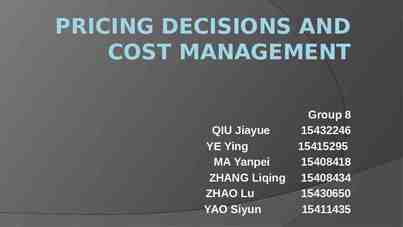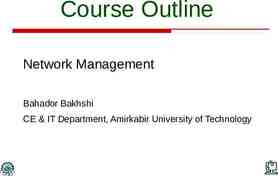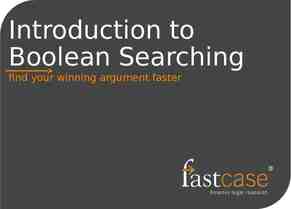Protection and Security CS-502 Operating Systems Fall 2007
30 Slides274.00 KB
Protection and Security CS-502 Operating Systems Fall 2007 (Slides include materials from Operating System Concepts, 7th ed., by Silbershatz, Galvin, & Gagne and from Modern Operating Systems, 2nd ed., by Tanenbaum) CS-502 Fall 2007 Protection and Security 1
Concepts Protection: Mechanisms and policy to keep programs and users from accessing or changing stuff they should not do Internal to OS Chapter 14 in Silbershatz Security: Issues external to OS Authentication of user, validation of messages, malicious or accidental introduction of flaws, etc. Chapter 15 of Silbershatz CS-502 Fall 2007 Protection and Security 2
Outline Part 1 The first computer virus Protection mechanisms Part 2 Security issues Some cryptographic themes CS-502 Fall 2007 Protection and Security 3
The First Computer Virus Reading assignment:– Ken Thompson, “Reflections on Trusting Trust,” Communications of ACM, vol.27, #8, August 1984, pp. 761-763 (pdf) Three steps 1. Program that prints a copy of itself 2. Training a compiler to understand a constant 3. Embedding a Trojan Horse without a trace CS-502 Fall 2007 Protection and Security 4
Step 1 – Program to print copy of itself How do we do this? First, store character array representing text of program Body of program Print declaration of character array Loop through array, printing each character Print entry array as a string Result: general method for program to reproduce itself to any destination! CS-502 Fall 2007 Protection and Security 5
Step 2 – Teaching constant values to compiler /* reading string constants */ if (s[i ] '\\') if (s[i] 'n') insert ('\n'); elseif (s[i] 'v') insert ('\v'); elseif Question: How does compiler know what integer values to insert for '\n‘, '\v‘, etc.? CS-502 Fall 2007 Protection and Security 6
Step 2 (continued) Answer: In the first compiler for this machine type, insert the actual character code i.e., 11 (decimal) for ‘\v’, etc. /* reading string constants */ if (s[i ] '\\') if (s[i] 'n') insert ('\n'); elseif (s[i] 'v') insert (11); elseif Next: Use the first compiler to compile itself! CS-502 Fall 2007 Protection and Security 7
Step 2 (continued) Result: a compiler that “knows” how to interpret the sequence “\v” And all compilers derived from this one, forever after! Finally: replace the value “11” in the source code of the compiler with ‘\v’ and compile itself again Note: no trace of values of special characters in – The C Programming Language book – source code of C compiler I.e., special character values are self-reproducing CS-502 Fall 2007 Protection and Security 8
Step 3 – Inserting a Trojan Horse In compiler source, add the text if (match(sourceString, pattern) insert the Trojan Horse code where “pattern” is the login code (for example) In compiler source, add additional text if (match(sourceString, pattern2) insert the self-reproducing code where “pattern2” is a part of the compiler itself Use this compiler to recompile itself, then remove source CS-502 Fall 2007 Protection and Security 9
Step 3 – Concluded Result: an infected compiler that will a. Insert a Trojan Horse in the login code of any Unix system b. Propagate itself to all future compilers c. Leave no trace of Trojan Horse in its source code Like a biological virus: – A small bundle of code that uses the compiler’s own reproductive mechanism to propagate itself CS-502 Fall 2007 Protection and Security 10
Questions? CS-502 Fall 2007 Protection and Security 11
Goals of Protection Operating system consists of a collection of objects (hardware or software) Each object has a unique name and can be accessed through a well-defined set of operations. Protection problem – to ensure that each object is accessed correctly and only by those processes that are allowed to do so. CS-502 Fall 2007 Protection and Security 12
Guiding Principles of Protection Principle of least privilege – Programs, users and systems should be given just enough privileges to perform their tasks Separate policy from mechanism – Mechanism: the stuff built into the OS to make protection work – Policy: the data that says who can do what to whom CS-502 Fall 2007 Protection and Security 13
Domain Structure Access-right object-name, rights-set where rights-set is a subset of all valid operations that can be performed on the object. Domain set of access-rights CS-502 Fall 2007 Protection and Security 14
Conceptual Representation – Access Matrix View protection as a matrix (access matrix) Rows represent domains Columns represent objects Access(i, j) is set of operations that process executing in Domaini can invoke on Objectj CS-502 Fall 2007 Protection and Security 15
Textbook Access Matrix Columns are access control lists (ACLs) Associated with each object Rows are capabilities Associated with each user, group, or domain CS-502 Fall 2007 Protection and Security 16
Unix & Linux System comprises many domains:– – Each user – Each group – Kernel/System (Windows has even more domains than this!) CS-502 Fall 2007 Protection and Security 17
Unix/Linux Matrix file1 file 2 file 3 device domain User/Domain 1 r rx rwx – enter User/Domain 2 r x rx rwx – User/Domain 3 rw – – – – Columns are access control lists (ACLs) Associated with each object Rows are capabilities Associated with each user or each domain CS-502 Fall 2007 Protection and Security 18
Changing Domains (Unix) Domain uid or gid Domain switch via file access controls – Each file has associated with it a domain bit (setuid bit). rwS instead of rwx – When executed with setuid on, then uid or gid is temporarily set to owner or group of file. – When execution completes uid or gid is reset. Separate mechanism for entering kernel domain – System call interface CS-502 Fall 2007 Protection and Security 19
General (textbook) representation Domains as objects added to Access Matrix CS-502 Fall 2007 Protection and Security 20
Practicalities At run-time – What does the OS know about the user? – What does the OS know about the resources? What is the cost of checking and enforcing? – Access to the data – Cost of searching for a match Impractical to implement full Access Matrix – Size – Access controls disjoint from both objects and domains CS-502 Fall 2007 Protection and Security 21
ACLs vs. Capabilities Access Control List: Focus on resources – – – – Good if resources greatly outnumber users Can be implemented with minimal caching Can be attached to objects (e.g., file metadata) Good when the user who creates a resource has authority over it Capability System: Focus on users – Good if users greatly outnumber resources – Lots of information caching is needed – Good when a system manager has control over all resources CS-502 Fall 2007 Protection and Security 22
Both are needed ACLs for files and other proliferating resources Capabilities for major system functions The common OSs offer BOTH – Linux emphasizes an ACL model provides good control over files and resources that are file-like – Windows 2000/XP emphasize Capabilities provides good control over access to system functions (e.g. creating a new user, or doing a system backup ) Access control lists for files CS-502 Fall 2007 Protection and Security 23
and good management, too! What do we need to know to set up a new user or to change their rights? to set up a new resource or to change the rights of its users? Who has the right to set/change access rights? No OS allows you to implement all the possible policies easily. CS-502 Fall 2007 Protection and Security 24
Enforcing Access Control User level privileges must always be less than OS privileges! – For example, a user should not be allowed to grab exclusive control of a critical device – or write to OS memory space and the user cannot be allowed to raise his privilege level! The OS must enforce it and the user must not be able to bypass the controls In most modern operating systems, the code which manages the resource enforces the policy CS-502 Fall 2007 Protection and Security 25
(Traditional) Requirements–System Call Code No user can interrupt it while it is running No user can feed it data to make it – violate access control policies – stop serving other users No user can replace or alter any system call code No user can add functionality to the OS! Data must NEVER be treated as code! CS-502 Fall 2007 Protection and Security 26
“Yeah, but ” No user can interrupt it while it is running Windows, Linux routinely interrupt system calls No user can feed it data to make it violate access control policies stop serving other users No user can replace or alter any system call code Except your average virus No user can add functionality to the OS! Except dynamically loaded device drivers Data must NEVER be treated as code! “One man’s code is another man’s data” A. Perlis CS-502 Fall 2007 Protection and Security 27
Saltzer-Schroeder Guidelines System design should be public Default should be no access Check current authority – no caching! Protection mechanism should be – Simple, uniform, built into lowest layers of system Least privilege possible for processes Psychologically acceptable KISS! CS-502 Fall 2007 Protection and Security 28
Reading Assignment Silbershatz, Chapter 14 CS-502 Fall 2007 Protection and Security 29
Questions? CS-502 Fall 2007 Protection and Security 30



































